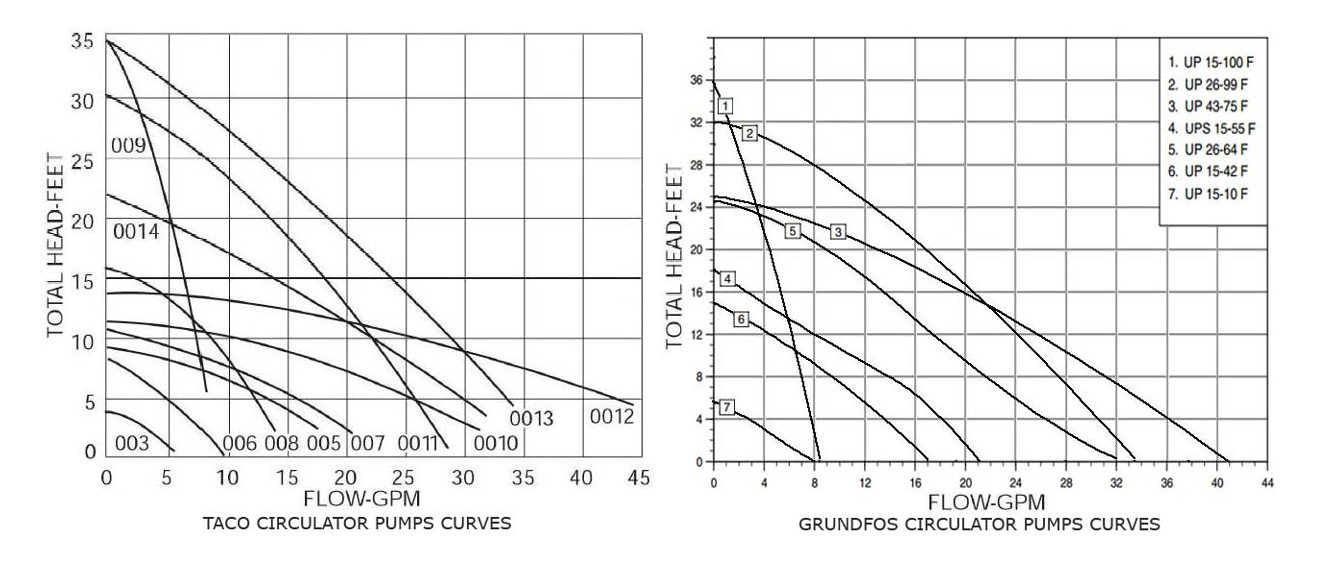By Rick Johnson, Applications Engineer for U.S. Boiler Company
Remember when installing a boiler was easy? You put the boiler in place, hooked up some pipes, put a couple of circulators in place and turn on the switch. Not so much anymore. There are several variables to be mindful of when installing a hydronic system.
Today we’re going to talk about the circulator, better known as “the pump.” Going back in time, we could do anything with ¾” pipe and a 007 circulator! Installing an indirect? No problem. Head to the supply house and get two sticks of ¾” M and a 007 pump for the boiler side piping. This is how I installed most of my tanks back when I was starting out. I didn’t really think about what I was doing because that is the way I was taught how to do it.
How many times have you heard, “I’ve been doing this for 30 years. I know how to install a tank!”
My reply is always the same, “Have you been doing this for 30 years or repeating your first year 30 times?” Learning is an ongoing process, and you should always question the “whys” behind what you are doing. Choosing a circulator is one of the key pieces behind a successful installation.
Selecting the right pump
A lot of boiler manufacturers supply a pump with different boiler models. They tell you where to install it and give you the curves behind it. This is because they know the recommended flow to make the boiler happy and not cause unnecessary issues. But what happens when you need to select a pump? What rules do you go by and what variables do you need to account for?
Let’s start with the following formula:
1 GPM (Gallons Per Minute) = 10,000 BTU at a 20°ΔT (difference between supply and return temps).
Using this formula, we know a 100K BTU boiler needs 10 GPM through the heat exchanger.
Okay, so we know the flow, but what about the head loss? Head loss… what’s that? Head loss is a measure of water friction against the pipes and fittings which restricts the flow rate. The higher the restriction, the less flow you will have.
More on head loss
Let’s talk about this for a minute. What you see on the data sheet of your product may not tell you the whole story. You’re installing an indirect. The data sheet tells you the tank has 6 feet of head loss at 5 GPM. “That’s great,” you think. “It’s pretty low. I can use a smaller circulator.” That may be true, but have you looked at everything going on with your install?
For the sake of making this simple, our job is going to consist of a single indirect tank direct piped to a 150K BTU boiler. Using the formula we discussed earlier, how many GPM do we need through the boiler to make it happy? Remember, 1 GPM = 10K BTU at a 20°ΔT. We need 15 GPM.
Now looking back at the spec sheet for the indirect we only see the head loss at 5 GPM. We need to find the head loss at 15 GPM. Let’s take a deeper dive into the manual of the product you are installing. As the flow increases through the heat exchanger, the head loss will raise exponentially. We find the head loss at the GPM you need to be 8, 10, 15 or even 25 feet of head (this will vary from tank to tank).
For our example, we are going to use 15 feet of head loss at 15 GPM in the tank. Remember, we are direct connected and not using primary/secondary piping. We need to add the head loss through the boiler too! Head loss through the boiler is 6 feet of head at 15GPM. Adding them together we now see that our circulator needs to overcome 21 feet of head at 15 GPM.
Using the charts below, which circulator would you pick?

These are pump curve charts for Taco and Grundfos circulators. Here is where we will find our answers. Let’s start with the Taco chart. We need 21 feet of head, and the GPM is 15. According to the Taco chart, we need a 0013 circulator. For Grundfos, we are re going to need a UP 26-99 F.
Takeaway
Is the recommended Taco or Grundfos circulator for this application larger than you thought? The pump charts illustrate all the different curves. There are many different types and sizes of circulators because there are so many variables in the mechanical room. The above curve charts represent common residential use, and they only represent a few.
I remember the first time I actually followed this calculation and used it as a tool for choosing my circulator. Afterward, I thought back to all the jobs I may have done incorrectly by not doing it this way. Yes, the systems may have worked, but the customer did not truly get what they were paying me for.
This is only one example. Obviously, there are many different variables out there and we cannot list them all. The takeaway here is that you need to understand what your circulator is connected to and calculate what size you need to in order to supply the recommended flow.
Our Heating Helper is an invaluable tool in helping you decipher what you need for head loss and flow. With the use of smaller and smaller heat exchangers, flow is more important than ever. Modulating and condensing boilers have a low water content. Think about putting 150k BTU to less than one gallon of water! What are the three most important factors? Flow, flow and flow. What determines your flow? The circulator you pick for the job. Stop the nuisance lockouts, stop the call backs and give the homeowner/building owner what they are paying for.

